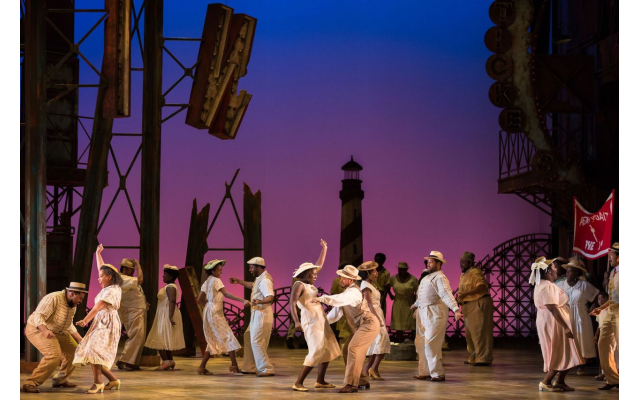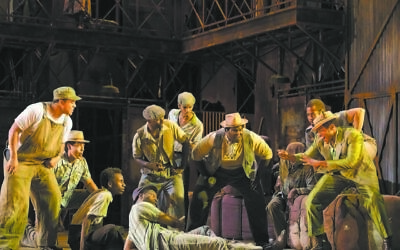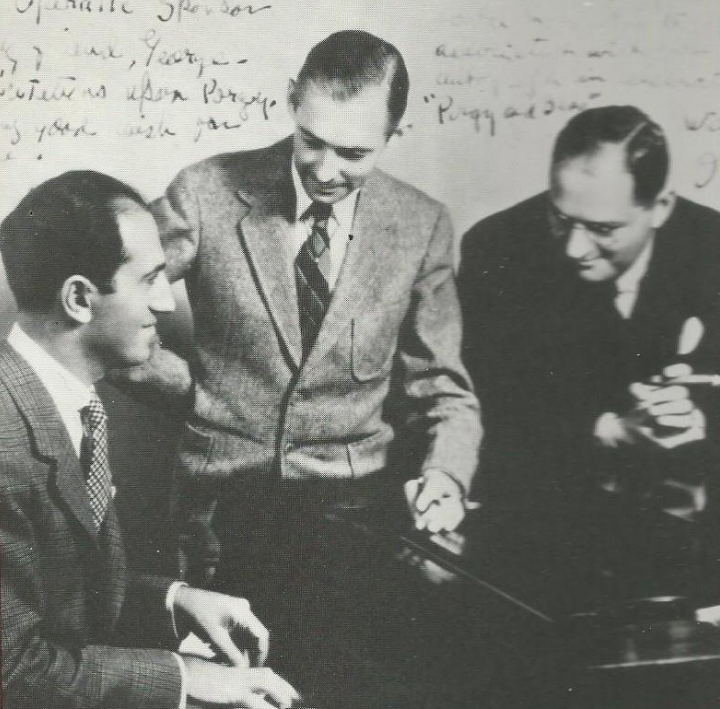‘Porgy and Bess’ and its Jewish Roots
Beginning March 7, The Atlanta Opera will bring Gershwins' "Porgy and Bess" to the Cobb Energy Performing Arts Centre for a series of performances.

This year is shaping up as the “Porgy and Bess” year on the American musical stage. In the fall, The Metropolitan Opera debuted a highly successful new production, seen in high definition video on Atlanta theater screens earlier this month. Local productions in the next several months are scheduled in Birmingham, Alabama, Philadelphia and at The Kennedy Center in Washington.
Beginning March 7, The Atlanta Opera will bring the beloved work by George and Ira Gershwin to the Cobb Energy Performing Arts Centre for a series of performances.
The musical director of the Atlanta performances, David Charles Abell, considers the work about African American life on Catfish Row in Charleston, written by the two Jewish Gershwin brothers from a book by DuBose Heyward, as an enduring American masterpiece.
“It will never go out of fashion, Abell said. “I hope people will always appreciate its greatness, the greatness of the storytelling, the greatness of the music. It’s an opera. It’s not a musical and you know it’s a great work of art.”
When it debuted in 1935, the Gershwins turned down an offer from the prominent Jewish Wall Street banker Otto Kahn to debut the work at The Metropolitan Opera.
Kahn, the board chairman of The Met, could only offer a limited run for what the two brothers like to call their folk opera. They partnered instead with The Theatre Guild, which presented the work like a Broadway musical, at New York’s Alvin Theatre, with eight performances a week, including two matinees. There was even a tryout for the show in Boston.

But the success of the large and some might call sprawling work was apparently not just due to the musical genius of the Gershwins. Much of the credit for the successful Broadway production can be attributed to the director of the production, Rouben Mamoulian, who was born to Armenian Jewish parents in the Russian Republic of Georgia. He apparently edited the work, shaped the production in critical ways and even helped to create a new ending.
The completed story of how these important Jewish creative figures worked together is told in a 2013 book “On My Way: The Untold Story of Rouben Mamoulian, George Gershwin and Porgy and Bess” by the opera historian, Joseph Horowitz.
He recounts how Mamoulian, who had never seen a black person until he arrived in America at the age of 25, came to head the drama school at the Eastman School of Music in Rochester, N.Y. Nonetheless, he directed the original non-musical stage version in 1927 of “Porgy” by Heyward that inspired the Gershwin work before going on to direct and re-edit the musical version in 1935.
Horowitz based his book on a revised script of “Porgy and Bess,” with critical changes in Mamoulian’s hand, which can be found in the director’s archives at the Library of Congress.
But the Jewish roots of Porgy and Bess may be seemingly deeper than just in how it was shaped for the stage. Abell tells of a concert performance that he conducted in Ukraine that led to a conversation he had with those he worked with there. They pointed out that one of the most beloved works from the show was based on a Ukrainian song that Gershwin, who was born Jacob Gershowitz, might have heard sung as a child.

“The management of the Opera House told me that the melody for ‘Summertime,’ was inspired by a Ukrainian folk song that Gershwin heard sung by a Ukrainian chorus in New York in the years before he wrote ‘Porgy and Bess.’ And he played me this song. And I thought, you know, it does sound a lot like ‘Summertime.’ It’s got that same melodic shape. And one of Gershwin’s grandparents came from Odessa, Ukraine. So there’s, you know, something to be said for that connection.”
The Gershwin brothers were known to have taken great care to faithfully portray the music and speech of African Americans and their Gullah dialect in Charleston. George Gershwin lived on Folly Island outside Charleston, soaking up black culture and music in local black schools and churches as he began writing in 1934.
When the work debuted on Broadway in the fall of 1935, he described it as “the greatest music composed in America.”
That opinion was perhaps confirmed 50 years later, in 1985, when “Porgy and Bess” finally entered the repertory of The Metropolitan Opera.
The opera historian Horowitz, in reviewing this season’s revival of the work by The Met, its first in nearly 30 years, described it in glowing terms.
“The Met’s vigorous new staging,” he wrote in The American Scholar magazine, “manages to vindicate a controversial cultural landmark and seal its stature as the highest creative achievement in American classical music.”
Bob Bahr is lecturing for six weeks on “Revisioning Broadway: Jews, Film and the American Musical” beginning March 17 at Temple Sinai.



comments